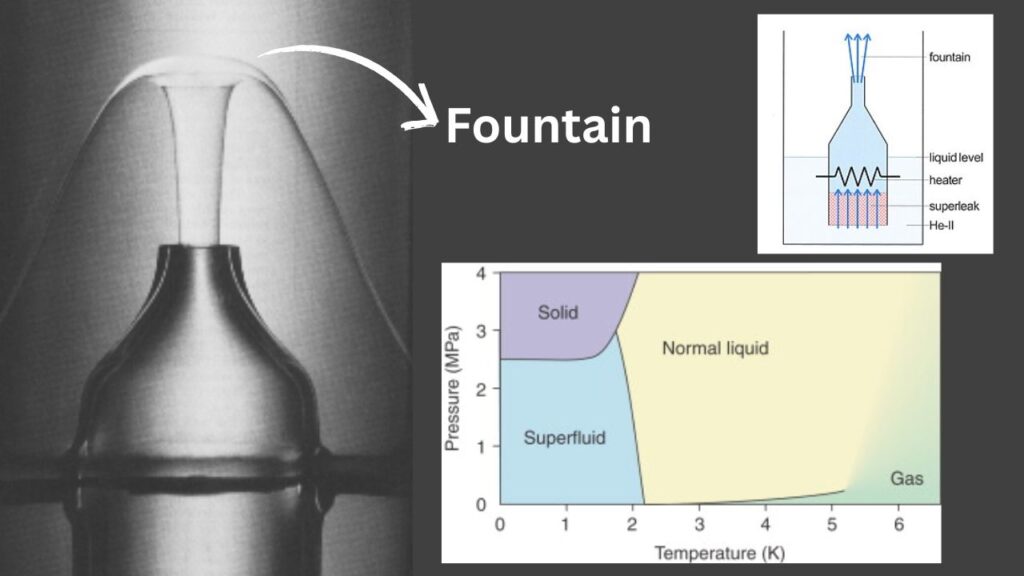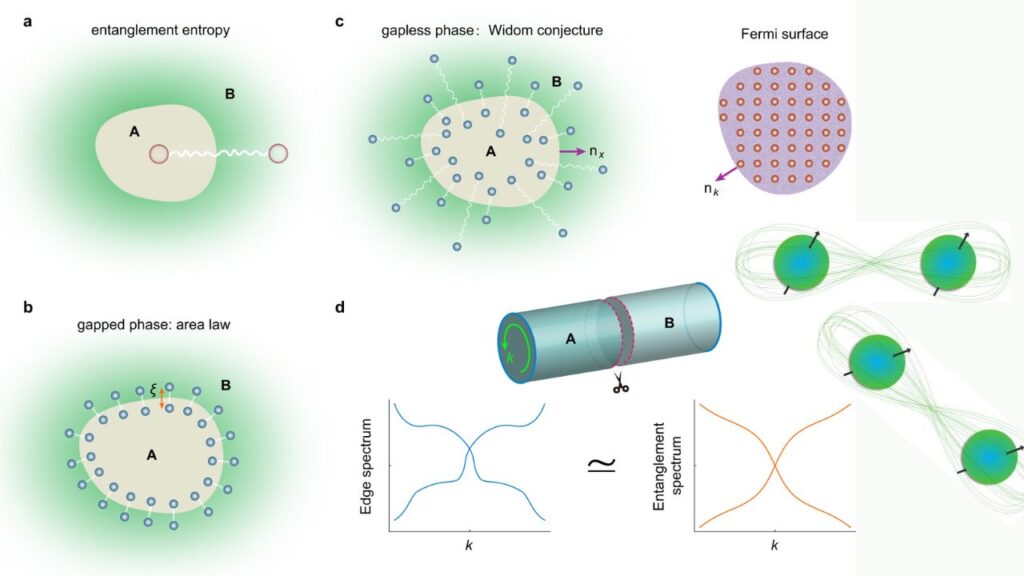Universal Quantum Law: Physicists have just uncovered a universal quantum law in superfluid helium that mirrors black hole behavior — and it’s changing how we understand the universe.
In a discovery that’s sending ripples through both quantum physics and cosmology, researchers have found that the entanglement entropy in superfluid helium follows the same area law once thought to apply only to black holes. This means the laws that govern some of the most mysterious and massive objects in the universe also apply to one of the coldest and smallest systems ever studied.

This isn’t just a quirky overlap — it might be a clue that quantum mechanics, thermodynamics, and gravity are all governed by deeper, universal principles we’re only beginning to understand.
Universal Quantum Law
| Feature | Details |
|---|---|
| Discovery | Entanglement entropy in superfluid helium follows the same area law seen in black holes |
| Significance | Suggests universal quantum principles that span vastly different physical systems |
| Technology Used | Advanced Quantum Monte Carlo simulations |
| Implications | Bridges condensed matter physics, cosmology, and quantum computing |
| Applications | Quantum computing, quantum gravity theories, material science |
| Published In | Science, May 2025 |
| Research Source | Wired article on quantum helium |
The discovery that superfluid helium obeys the same entanglement area law as black holes isn’t just an academic curiosity — it may be the missing link between quantum mechanics and the cosmos.
From quantum computing to cosmology, this surprising commonality challenges our understanding of space, matter, and information.
It’s a reminder that the rules of the universe aren’t always what they seem — and that by looking at the coldest places on Earth, we might learn the hottest truths about the stars.
What Is Superfluid Helium, and Why Is It So Special?

To understand the breakthrough, let’s start with superfluid helium. At extremely low temperatures — just above absolute zero (−273.15°C or −459.67°F) — helium-4 enters a bizarre quantum state. It becomes a superfluid, a liquid that can flow without any friction, climb up walls, and leak through microscopic cracks.
Superfluids aren’t just cold — they behave according to quantum rules on a large scale. That makes them perfect testbeds for exploring quantum phenomena in a laboratory.
What Is Entanglement Entropy?
In simple terms, entanglement is the quantum connection between particles, even when separated by vast distances. It’s a hallmark of quantum mechanics — famously called “spooky action at a distance” by Einstein.

Entanglement entropy is a way to measure how much particles in a region are entangled with the rest of a system.
Now here’s the shocker: this entanglement entropy doesn’t scale with volume (as you’d expect from normal systems), but with area — like a soap bubble’s surface, not its inside.
This “area law” was originally discovered in the context of black holes, where the entropy (a measure of disorder) increases with the surface area of the event horizon, not its volume. That’s wildly counterintuitive — but it seems to be universal.
The Groundbreaking Research
The new study used quantum Monte Carlo simulations — a type of statistical modeling — to simulate how helium atoms behave in their superfluid state. The researchers focused on how entanglement entropy behaved in spherical regions of the fluid.
What they found was nothing short of remarkable:
The entanglement entropy scaled with the surface area of the region, not its volume.
This is the same principle that governs black hole entropy, first proposed by physicists Jacob Bekenstein and Stephen Hawking in the 1970s.
In essence, it suggests that information in the universe might always be encoded on boundaries — not in bulk.
How the Simulations Work
- Quantum Monte Carlo methods simulate quantum particles by running many random walks (like a digital dice roll) and calculating probabilities.
- Researchers created virtual models of superfluid helium-4 at extremely low temperatures.
- They measured quantum entanglement in spherical regions and recorded how entropy grew as the size increased.
- The results showed a clear correlation with surface area, not volume — matching the area law.
Why This Is So Important
Let’s break it down in simple terms.
This discovery means that something as tiny and cold as superfluid helium and something as enormous and hot as a black hole are governed by the same quantum law.
Here’s why it matters:
- It unifies two very different fields — condensed matter physics and quantum gravity.
- It gives physicists new tools to test theories of quantum gravity, which tries to combine Einstein’s relativity with quantum mechanics.
- It could influence quantum computing by helping scientists understand how information is stored and transferred at a quantum level.
- It helps us understand the fabric of spacetime itself.
Real-World Applications and Future Directions
This isn’t just a theoretical win. Here’s how it might affect technology and science:
1. Quantum Computing
By understanding entanglement entropy, we can build more efficient quantum processors that store and transfer data in entangled states, which are more powerful than classical bits.

2. Material Science
Studying how entanglement scales in real-world materials may help develop superconductors or other quantum materials that operate at higher temperatures and lower costs.
3. Cosmology and Astrophysics
Physicists can test holographic theories that suggest the universe itself might be a projection — a bold idea with roots in black hole physics.
Expert Insight
Dr. Giuseppe Carleo, one of the physicists involved, told Wired:
“These results show that black hole-like quantum behavior is not a fringe phenomenon. It’s everywhere if you know how to look.”
That’s a big deal. It means the same blueprint might govern everything from atoms to galaxies.
Attosecond ‘Clock’ Measures Electron Tunneling Time With Unmatched Precision
New Wood Stove Tech Cuts Pollution and Boosts Efficiency – Here’s How It Works
Breakthrough Electrodes Could Make Green Hydrogen Cheaper and Last Longer Than Ever
FAQs About Universal Quantum Law
What is superfluid helium?
Superfluid helium is helium cooled near absolute zero, where it enters a state with zero viscosity and displays quantum behaviors on a visible scale.
What is entanglement entropy?
It’s a measurement of how quantum particles are connected, even when separated. Think of it as the “information overlap” between different parts of a quantum system.
Why does the area law matter?
Because it suggests a universal rule that applies to black holes, quantum fields, and superfluids — hinting at deeper laws of nature.
Can this lead to new technologies?
Yes. Understanding entanglement can boost quantum computing, material science, and even cosmological modeling.






